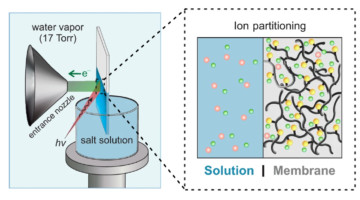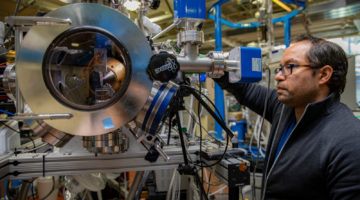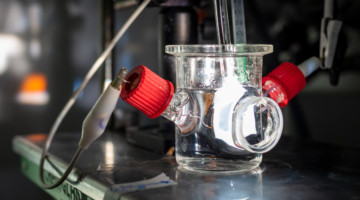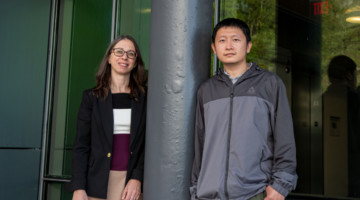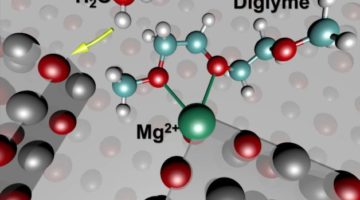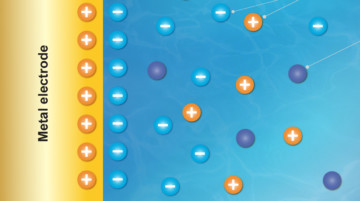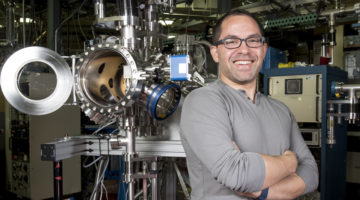Researchers performed the first direct measurement of the Donnan electrical potential, which arises from an imbalance of charges at membrane-solution interfaces. Considered unmeasurable for over a century, the Donnan potential is relevant to a wide range of fields, from cell biology to energy storage and water desalination. Read more »![]()
![]()
The Donnan Potential, Revealed at Last
Researchers at the ALS recently led the first direct measurement of the Donnan potential, an electric potential that arises from an imbalance of charges at the interface of a charged membrane and a liquid. The work could yield new insights in areas such as ion transport through cellular membranes, ion exchange membranes in energy storage strategies, and water purification technologies. Read more »
A Photoelectrode Protection Scheme for Solar-Fuel Production
Microscopy, spectroscopy, and computational studies of a promising artificial-photosynthesis material led researchers to develop a model photoelectrochemical (PEC) cell with remarkable stability and longevity as it selectively converts sunlight and carbon dioxide into two promising sources of renewable fuels—ethylene and hydrogen. Read more »
New Device Advances Commercial Viability of Solar Fuels
A Berkeley Lab research team developed a new artificial photosynthesis device component that exhibits remarkable stability and longevity as it selectively converts sunlight and carbon dioxide into two promising sources of renewable fuels—ethylene and hydrogen. Read more »
Scientists Solve a Magnesium Mystery in Rechargeable Battery Performance
Rechargeable batteries based on magnesium, rather than lithium, have the potential to pack more energy into smaller batteries. However, researchers have discovered a surprising set of chemical reactions involving magnesium that degrade battery performance even before the battery can be charged up. Read more »
Tender X-Rays Map the Double-Layer Potential
In a first-of-its-kind experiment, ALS researchers demonstrated a new, direct way to study the inner workings of a phenomenon in chemistry known as an “electrochemical double layer” that forms where liquids meet solids—where battery fluid meets an electrode, for example. Read more »![]()
![]()
Researchers Peel Back Another Layer of Chemistry with ‘Tender’ X-Rays
Scientists can now directly probe a previously hard-to-see layer of chemistry, which forms in a narrow band where liquid meets solid, thanks to a unique x-ray toolkit developed at Berkeley Lab. Read more »
